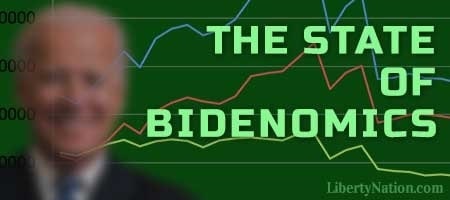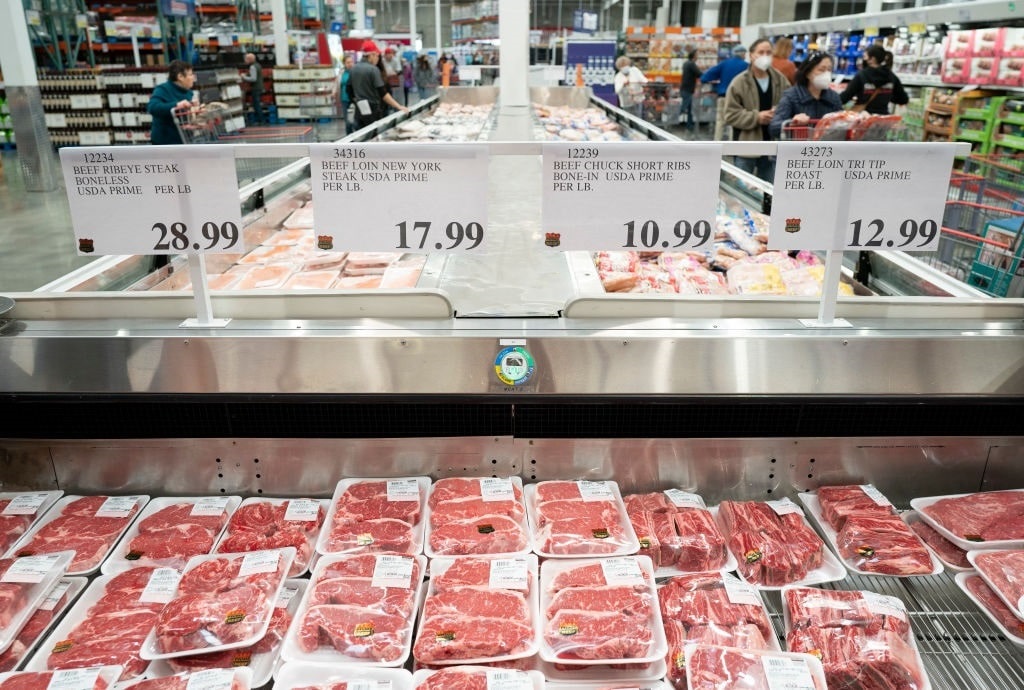Aside from sticker shock, danger lurks behind the national debt.
Based on Treasury data, the US national debt is on track to top $34 trillion by the year’s end or to kick off 2024. Observers keeping an eye on the federal government’s Debt to the Penny clock are in shock and awe at how much Uncle Sam borrows daily to keep the doors of Congress open and the foreign wars in operation. Unfortunately, the mountain of I.O.U.s is more than a circus act in Washington. There are hidden costs to a sea of red ink flowing through the Swamp.
A Primer: National Debt
On January 3, 2023, the national debt stood at $31.3 trillion. Now, almost one year later, the total public debt outstanding has exceeded $33.8 trillion. That’s a roughly $2.5 trillion increase in not even a full year. Taxpayers who are forced to repay this debt no longer need to gaze at the sky to witness cosmic wonders. They can see their elected officials defy the space-time continuum every day. Unfortunately, this is only Act One of Uncle Sam’s Tragic Comedy. The other two acts involve the annual trillion-dollar budget deficit and interest payments.
 During one of the 1992 presidential election debates, an audience member asked then-President George H.W. Bush and his challengers – former President Bill Clinton and Ross Perot – how the national debt – a laughable $5 trillion at the time – personally affected them. They, particularly Bush and Clinton, could not offer the individual a satisfactory answer, alluding to something about interest rates and jobs.
During one of the 1992 presidential election debates, an audience member asked then-President George H.W. Bush and his challengers – former President Bill Clinton and Ross Perot – how the national debt – a laughable $5 trillion at the time – personally affected them. They, particularly Bush and Clinton, could not offer the individual a satisfactory answer, alluding to something about interest rates and jobs.
The national debt has been a subject that conservatives and libertarians have often discussed, in earnest, for a long time. Politicians in Washington have typically used the topic as a political football. Today, it is being seriously talked about, and left-leaning folks on Capitol Hill now concede that reining in the federal deficit is vital to fighting inflation after years of saying the opposite. But why is tackling the national debt even a priority if the country has been stewing in astronomical levels for years?
Hidden Costs
In response to the most significant episode of inflation since the 1980s, the Federal Reserve engaged in quantitative tightening, a blend of higher interest rates and balance sheet reduction (government bonds and mortgage-backed securities). Since March 2022, the benchmark Fed funds rate has risen by about 500 basis points to a 22-year high of 5.25% and 5.5%. A rising-rate climate generates a broad array of ramifications for a nation drowning in debt, be it governments or households. One of these consequences is skyrocketing debt-servicing payments.

(Photo by Liu Guanguan/China News Service/VCG via Getty Images)
As Liberty Nation has reported, annual interest payments have topped $1 trillion for the first time. It was a massive milestone for the drunken sailors in the nation’s capital for a couple of reasons. First, servicing the debt means approximately 40% of federal income taxes will be allocated toward interest payments. Second, the more these interest costs grow, the greater the risk of crowding out funding for other government expenditures and services. Lastly, a significant share of the Treasury’s debt issuance over the last six months – and well into 2024 – will be dedicated to paying the interest.
What’s more, approximately one-third, or $7.6 trillion, of the US government debt, will mature and account for about a quarter of the gross domestic product. This means the smartest men and women in the Treasury must decide to issue new debt at the current rate (between 3% and 4%) or find other methods to repay the debt. For now, the former is the likely result.
What happens if demand for Treasurys dries up? The US bond market has been chaotic since October, with yields touching their highest levels in 16 years. The recent spike in long-term Treasury yields was primarily driven by concerns surrounding the federal government’s fiscal trajectory and investors demanding a higher return for risky 20- or 30-year bonds. Auction data suggest that domestic and foreign investor interest have diminished, forcing primary dealers to scoop up vast supplies. The Fed is also sitting on the sidelines because it is grappling with an $8 trillion balance sheet. Foreign holdings, especially from China and Japan, are on the decline.
If there are not enough buyers to bail out the US government, Republicans and Democrats will need to employ a couple of strategies. The first is if politicians cannot take a chainsaw the budget, they will need to raise taxes to dramatic rates. The second is to reduce spending to pre-pandemic levels, from $7 trillion to below $5 trillion. It might not seem like much, but it is a herculean endeavor for the two parties. Economist Mike Shedlock said it best: “Neither party will fix the deficits. Neither party will do anything about mounting debt. No one will do anything about anything because the political system is totally broken.”
Ultimately, the never-ending growth in the national debt will lead to various scenarios (or a combination of circumstances): higher taxes, fewer public benefits, above-trend inflation, and a devalued currency.
Unsustainable
Federal Reserve Chair Jerome Powell has repeatedly acknowledged that the present fiscal path is unsustainable. But what does this even look like? The University of Pennsylvania’s Penn Wharton Budget Model suggests that the debt-to-GDP ratio limit is about 200% before “corrective action” is required. Today, it is about 123%. Billionaire hedge fund titan Ray Dalio warned that kicking the can down the road by borrowing and spending more will result in a cavalcade of political and social challenges.
But the public can rest easy because lawmakers have an idea: Launch a special fiscal commission to tackle the national debt. Apparently, what the country needs is a panel of Republicans and Democrats who created this very problem to spearhead a crusade to solve the financial crisis! What could possibly go wrong?

